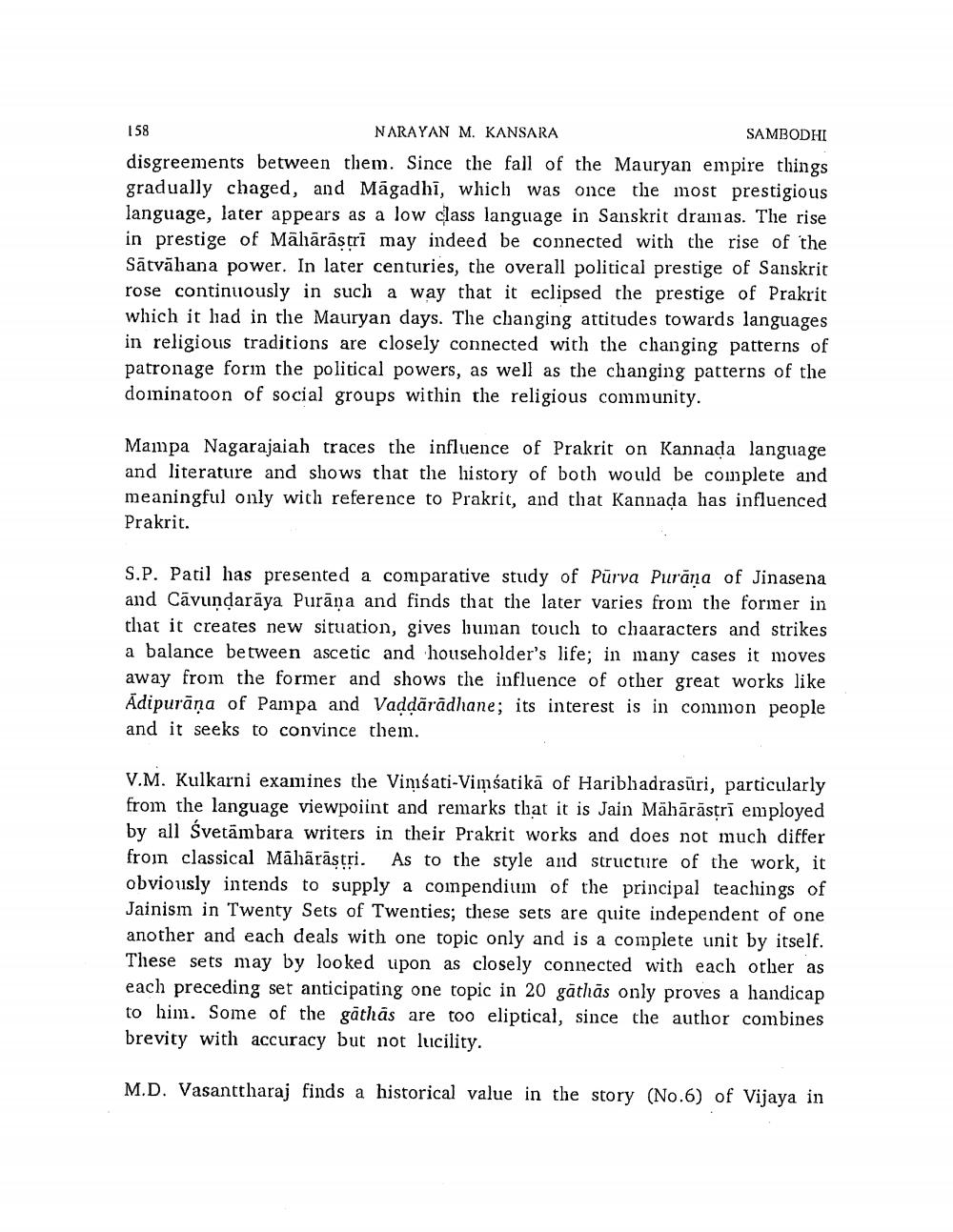________________
158 NARAYAN M. KANSARA
SAMBODHI disgreements between them. Since the fall of the Mauryan empire things gradually chaged, and Māgadhi, which was once the most prestigious language, later appears as a low class language in Sanskrit dramas. The rise in prestige of Mālārāstri may indeed be connected with the rise of the Sātvähana power. In later centuries, the overall political prestige of Sanskrit rose continuously in such a way that it eclipsed the prestige of Prakrit which it liad in the Mauryan days. The changing attitudes towards languages in religious traditions are closely connected with the changing patterns of patronage forin the political powers, as well as the changing patterns of the doininatoon of social groups within the religious community.
Mampa Nagarajaiah traces the influence of Prakrit on Kannada language and literature and shows that the history of both would be complete and meaningful only with reference to Prakrit, and that Kannada has influenced Prakrit.
S.P. Patil has presented a comparative study of Pūrva Purāņa of Jinasena and Cāvundarāya Purāņa and finds that the later varies from the former in that it creates new situation, gives human touch to chaaracters and strikes a balance between ascetic and householder's life; in many cases it moves away from the former and shows the influence of other great works like Adipurāņa of Pampa and Vaddārādhane; its interest is in common people and it seeks to convince them.
V.M. Kulkarni examines the Vimsati-Vimsatikā of Haribhadrasūri, particularly from the language viewpoiint and remarks that it is Jain Māhārāstrī employed by all Śvetāmbara writers in their Prakrit works and does not much differ froin classical Māhārāstri. As to the style and structure of the work, it obviously intends to supply a compendium of the principal teachings of Jainism in Twenty Sets of Twenties; these sets are quite independent of one another and each deals with one topic only and is a complete unit by itself. These sets may by looked upon as closely connected with each other as each preceding set anticipating one topic in 20 gāthas only proves a handicap to him. Some of the gāthās are too eliptical, since the author combines brevity with accuracy but not lucility.
M.D. Vasanttharaj finds a historical value in the story (No.6) of Vijaya in




